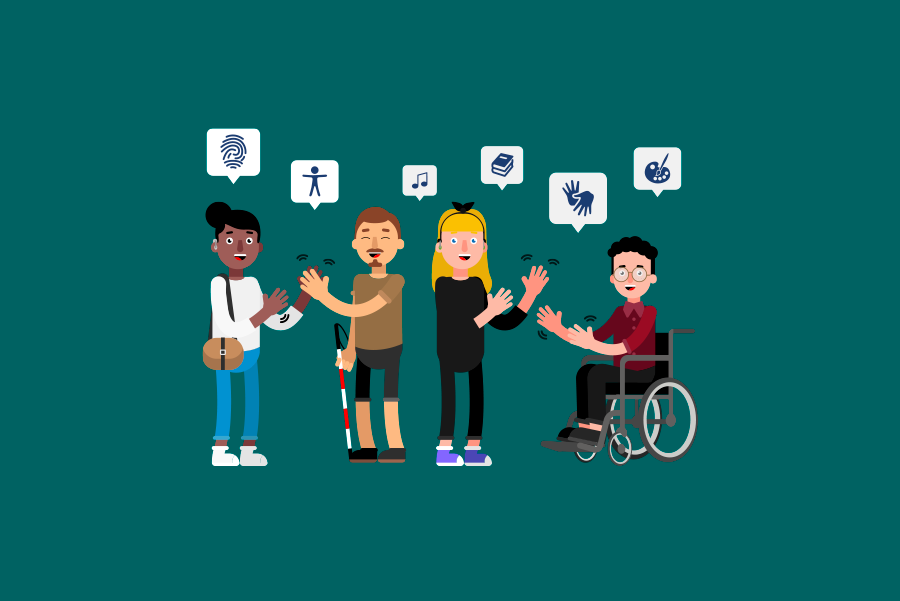Welcome to Facts Vibes! Today, we delve into deaf culture, exploring intriguing facts that shed light on this vibrant and diverse community. Join us as we uncover the rich traditions and unique characteristics that shape the world of the deaf.
Understanding Deaf Culture: Unveiling The Facts
Understanding Deaf Culture: Unveiling The Facts
Deaf culture is a rich and diverse community with its own unique language, traditions, and social norms. It’s important to recognize that Deaf culture is not a disability, but rather a cultural identity with its own history and values.
One of the most important aspects of Deaf culture is the use of sign language. American Sign Language (ASL) is a complete and complex language with its own grammar and syntax, and it is the primary means of communication for many Deaf individuals. Understanding the significance of ASL is crucial in building meaningful connections and bridging the gap between the Deaf and hearing worlds.
Another key aspect of Deaf culture is the sense of community and belonging. Deaf individuals often find a strong sense of identity and connection within their community, and they take pride in their shared experiences and challenges. Being part of the Deaf community provides a support network and a sense of solidarity that is integral to their cultural identity.
It’s essential to recognize and respect the unique customs and traditions within Deaf culture. From visual arts and storytelling to Deaf-centric events and celebrations, the cultural practices of the Deaf community are a source of pride and significance. These traditions play a vital role in preserving the heritage and identity of Deaf culture.
Overall, understanding Deaf culture is about recognizing the diversity, resilience, and richness of a community that has its own language, traditions, and values. By embracing and respecting Deaf culture, we can promote inclusivity and bridge the gap between different linguistic and cultural communities.
Most popular facts
Deaf culture is a unique cultural and linguistic community that uses sign language as its primary mode of communication.
Deaf culture is a unique cultural and linguistic community that uses sign language as its primary mode of communication.
American Sign Language (ASL) is a distinct language with its own grammar and syntax, and is crucial to deaf culture.
American Sign Language (ASL) is a distinct language with its own grammar and syntax, and is crucial to deaf culture.
Deaf culture values visual communication, facial expressions, and body language as important aspects of communication.
Deaf culture values visual communication, facial expressions, and body language as important aspects of communication.
Many deaf individuals take pride in their identity as members of the deaf community and do not see deafness as a disability.
Many deaf individuals take pride in their identity as members of the deaf community and do not see deafness as a disability.
Deaf communities often have their own social norms, traditions, and customs that differ from the hearing world.
Deaf communities often have their own social norms, traditions, and customs that differ from the hearing world.
Deaf events and gatherings, such as Deaf clubs and Deaf festivals, are important for fostering a sense of belonging and camaraderie within the deaf community.
Deaf events and gatherings, such as Deaf clubs and Deaf festivals, are important for fostering a sense of belonging and camaraderie within the deaf community.
Deaf art, literature, and storytelling play a significant role in preserving and celebrating deaf culture.
Deaf art, literature, and storytelling play a significant role in preserving and celebrating deaf culture.
The deaf community has a rich history of activism and advocacy for equal rights, accessibility, and recognition of sign languages.
The deaf community has a rich history of activism and advocacy for equal rights, accessibility, and recognition of sign languages.
Many deaf schools and institutions have played a vital role in nurturing deaf culture and identity.
Deaf schools and institutions have played a vital role in nurturing deaf culture and identity.
Deaf culture embraces technological advancements that improve accessibility, such as video relay services and captioning.
Deaf culture embraces technological advancements that improve accessibility, such as video relay services and captioning.
Deaf culture values the sharing of information and resources within the community, particularly through deaf media outlets.
Deaf culture values the sharing of information and resources within the community, particularly through deaf media outlets.
Family dynamics and social interactions within the deaf community often differ from those in the hearing world.
Family dynamics and social interactions within the deaf community often differ from those in the hearing world.
Deaf culture encompasses diverse perspectives, including those from culturally Deaf individuals, hard of hearing individuals, and late-deafened individuals.
Deaf culture includes diverse perspectives from culturally Deaf individuals, hard of hearing individuals, and late-deafened individuals.
Deaf culture is influenced by regional variations in sign languages and cultural practices around the world.
Deaf culture is influenced by regional variations in sign languages and cultural practices around the world.
Deaf individuals often have a strong sense of pride in their deaf identity and view it as an integral part of who they are.
Deaf individuals often have a strong sense of pride in their deaf identity and view it as an integral part of who they are.
In conclusion, the rich and diverse deaf culture is an essential part of our society, contributing valuable insights and perspectives. It is crucial to continue raising awareness and promoting inclusivity to ensure that the deaf community receives the respect and support they deserve. Embracing and celebrating this vibrant culture is a step towards creating a more equitable and inclusive world for all.
